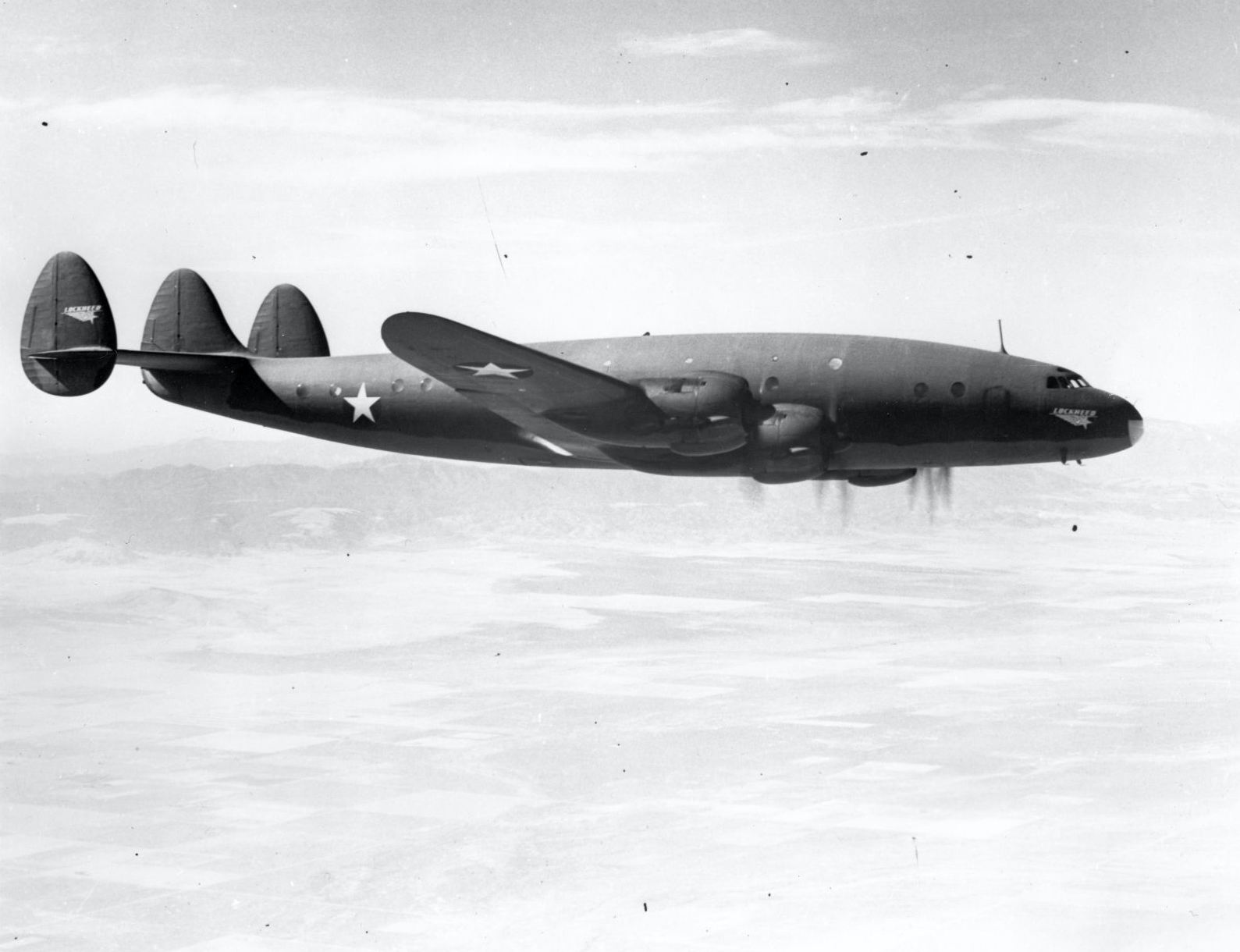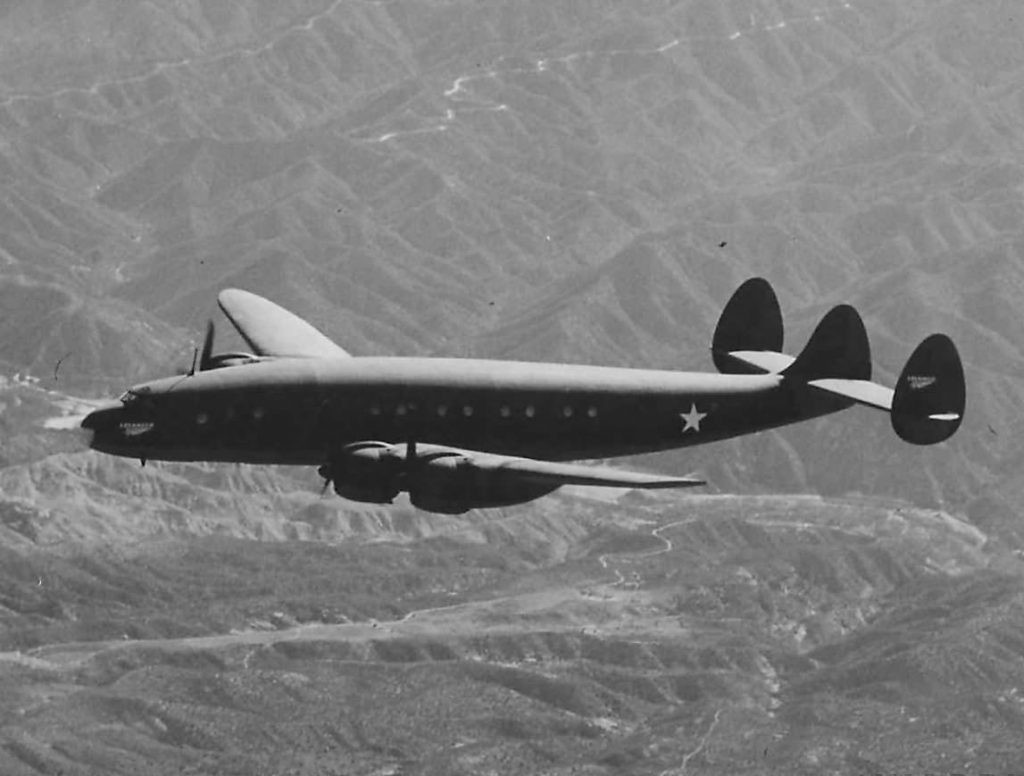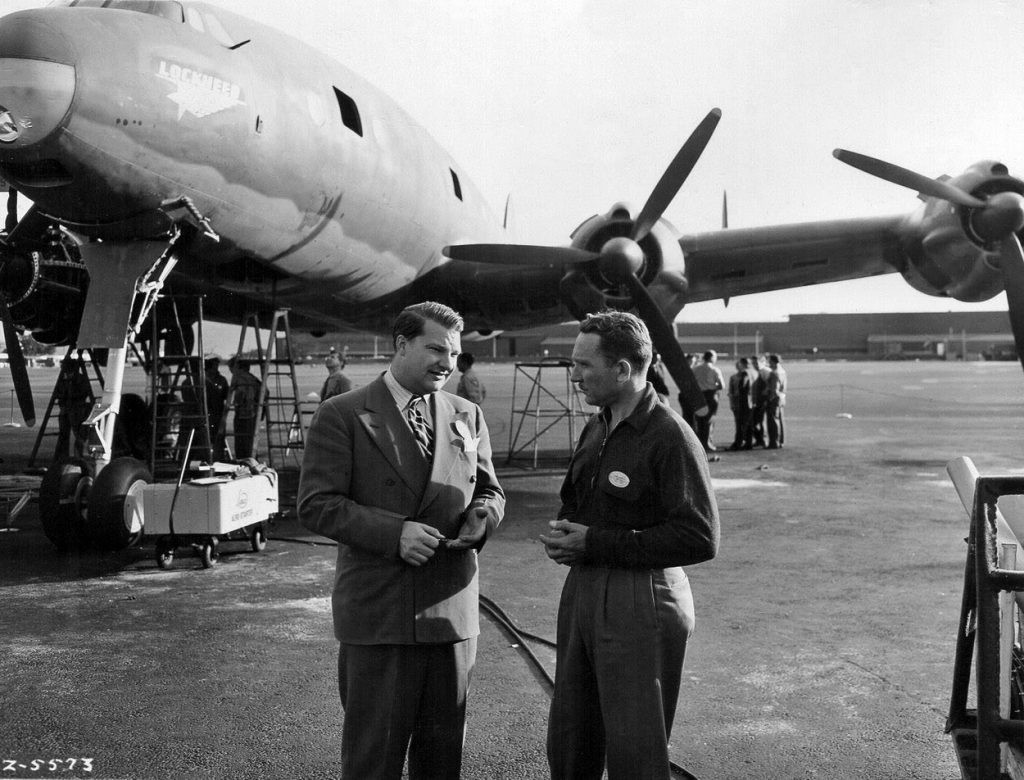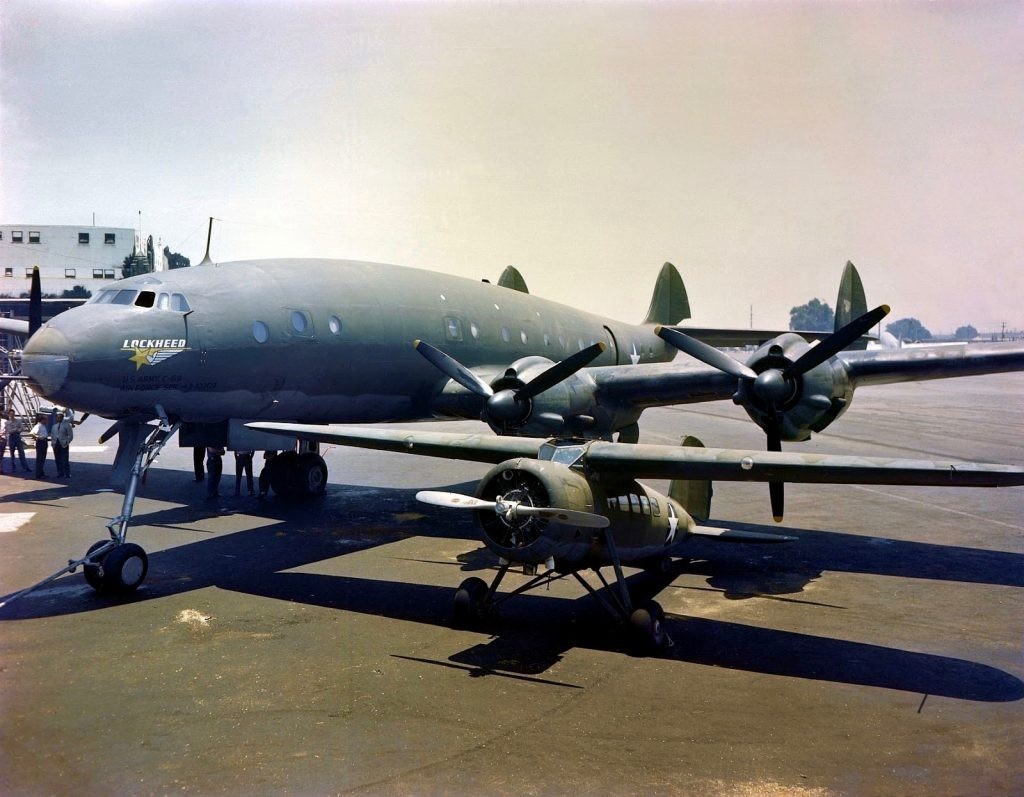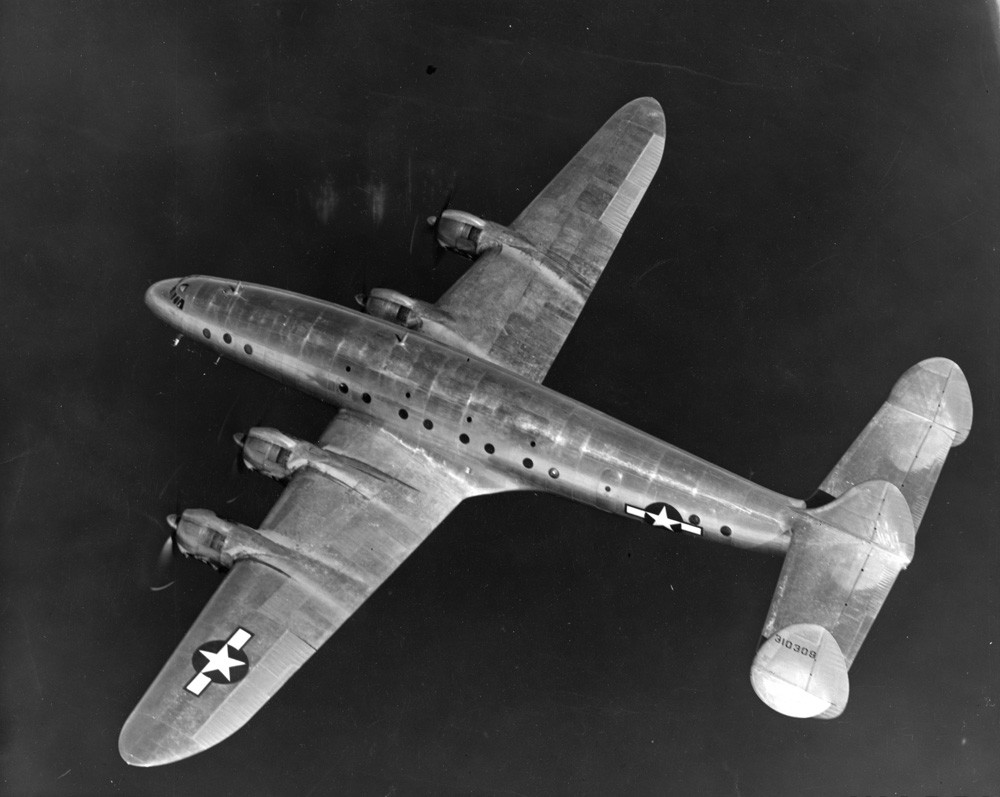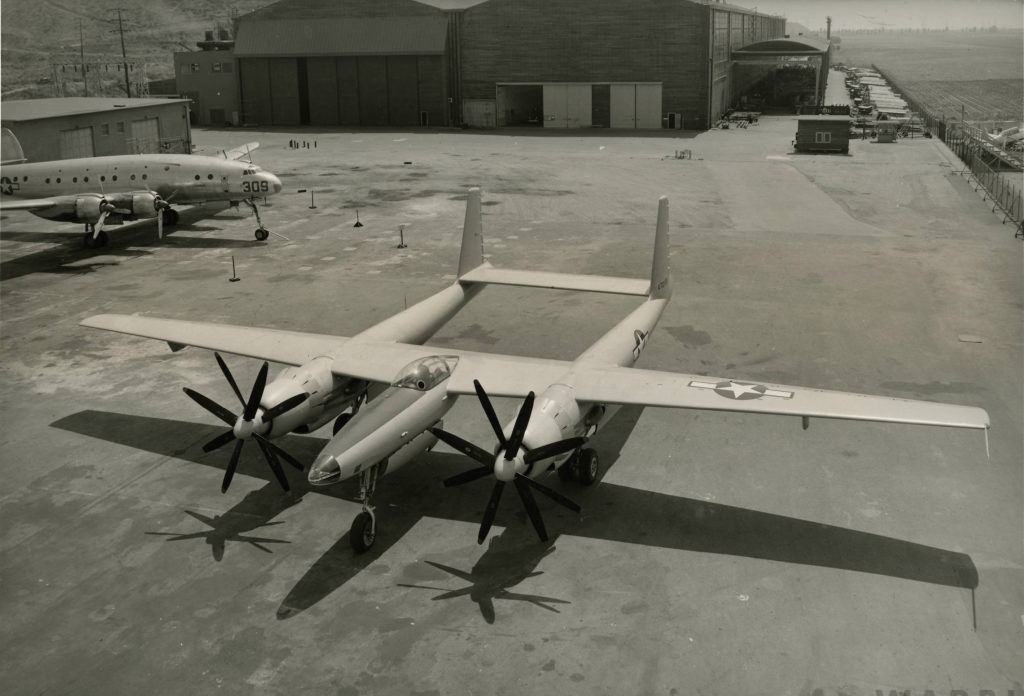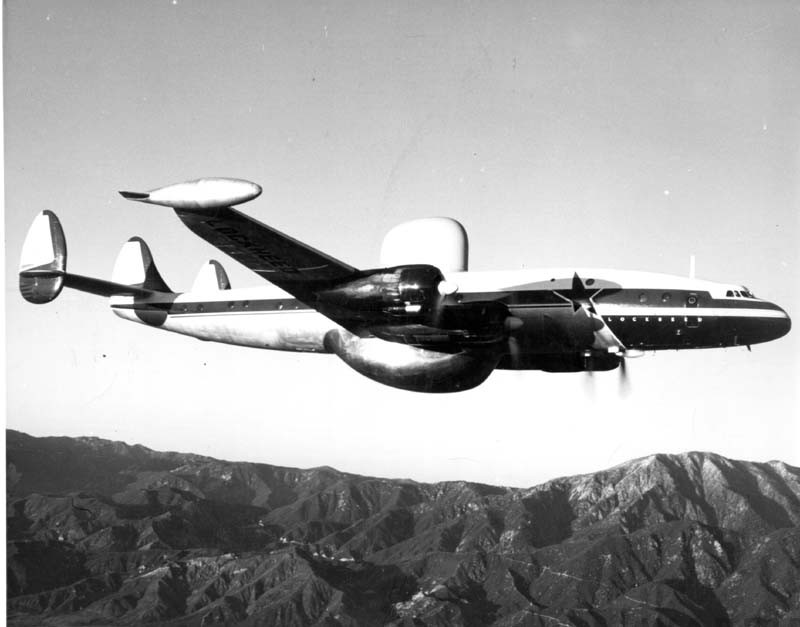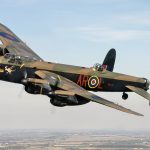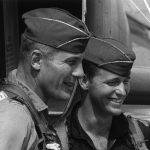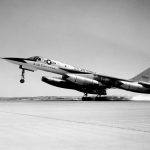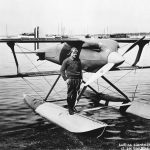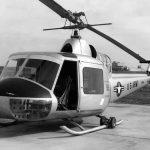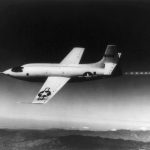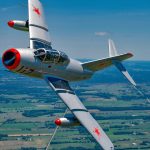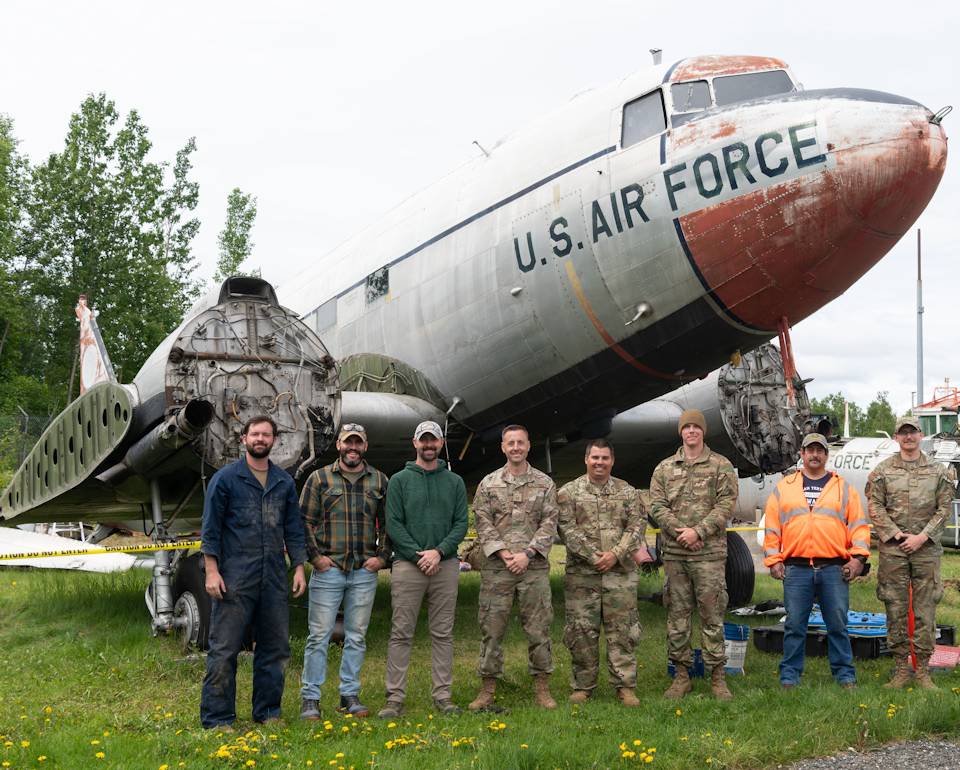by Bryan R. Swopes of This Day in Aviation
On January 9, 1943, at the controls of the United States Army Air Forces, Boeing’s Chief Test Pilot, Eddie Allen, made the first flight of the Lockheed L-049 Constellation prototype, NX25600, from Lockheed Air Terminal at Burbank, California, to Muroc Army Airfield (today known as Edwards Air Force Base). Lockheed’s Chief Test Pilot, Milo G. Burcham, was the co-pilot. Also on board were Lockheed’s chief research engineer, Clarence L. (“Kelly”) Johnson; Rudy Thoren, Johnson’s assistant; and Dick Stanton, chief mechanic.
When the flight ended after 58 minutes, Allen said, “This machine works so well that you don’t need me anymore!” With that, Allen returned to Seattle. The Lockheed Model 49-46-10, company serial number 049-1961, was designated XC-69 by the U.S. Army Air Forces and assigned the serial number 43-10309.
[wbn_ads-google_one]
The Constellation was operated by a flight crew of four: two pilots, a navigator, and a flight engineer. It could carry up to 81 passengers. The airplane was 95 feet, 1 3⁄16 inches (28.986 meters) long with a wingspan of 123 feet, 0 inches (37.490 meters), and an overall height of 23 feet, 7⅞ inches (7.210 meters). It had an empty weight of 49,392 pounds (22,403.8 kilograms) and a maximum takeoff weight of 86,250 pounds (39,122.3 kilograms).
The XC-69 was powered by four air-cooled, supercharged, 3,347.662-cubic-inch-displacement (54.858 liters), Wright Aeronautical Division Cyclone 18 745C18BA2 engines. Also known as the Duplex Cyclone, these were two-row, 18-cylinder radial engines with a compression ratio of 6.5:1, which required 100/130-octane aviation gasoline. They were rated at 2,000 horsepower at 2,400 r.p.m., or 2,200 horsepower at 2,800 r.p.m. for takeoff, (five minute limit), The 745C18BA2 was 6 feet, 4.26 inches (1.937 meters) long, 4 feet, 7.78 inches (1.417 meters) in diameter and weighed 2,595 pounds (1,177 kilograms). The engines drove 15 foot, 2 inches (4.623 meters) diameter, three-bladed Hamilton Standard Hydromatic 43E60 constant-speed propellers through a 0.4375:1 gear reduction.
[wbn_ads-google_one]
The L-049 had a cruise speed of 313 miles per hour (504 kilometers per hour) and a range of 3,995 miles (6,429 kilometers). Its service ceiling was 25,300 feet (7,711 meters). The prototype XC-69 was later re-engined with Pratt & Whitney Double Wasp 2SC14-G (R-2800-83) engines and designated XC-69E. These had a Normal rating of 1,700 horsepower at 2,600 r.p.m., to 7,300 feet (2,225 meters), 1,500 horsepower at 17,500 feet (5,334 meters), and 2,100 horsepower at 2,800 r.p.m. for Takeoff.
After the war, the Constellation prototype was sold to Howard Hughes’ Hughes Aircraft Company for $20,000 and registered as NX67900. In May 1950, Lockheed bought the prototype back from Hughes for $100,000 and it was again registered as NC25600. It had accumulated just 404 flight hours up to this time.
Lockheed L-1049 Super Constellation prototype, NX6700, ex-L-049 NX25600. (Lockheed Martin)
[wbn_ads-google_one]
Lockheed then converted 049-1961 to a prototype for the L-1049 Super Constellation with another registration, NX6700. In 1952, it was once again converted, this time as an aerodynamic test aircraft for the U.S. Navy PO-1W radar early warning aircraft (later redesignated WV-1 and EC-121 Warning Star). It was also used to test the Allison YT56 turboprop engine by placing it in the #4 position.
Lockheed built two XC-69 prototypes. Twenty-two C-69s and 856 Constellations of all types were produced. The Lockheed Constellation was in production from 1943–1958 in both civilian airliner and military transport versions. It is the classic propeller-driven transcontinental and transoceanic airliner.
For more aviation anniversaries please visit www.thisdayinaviation.com







